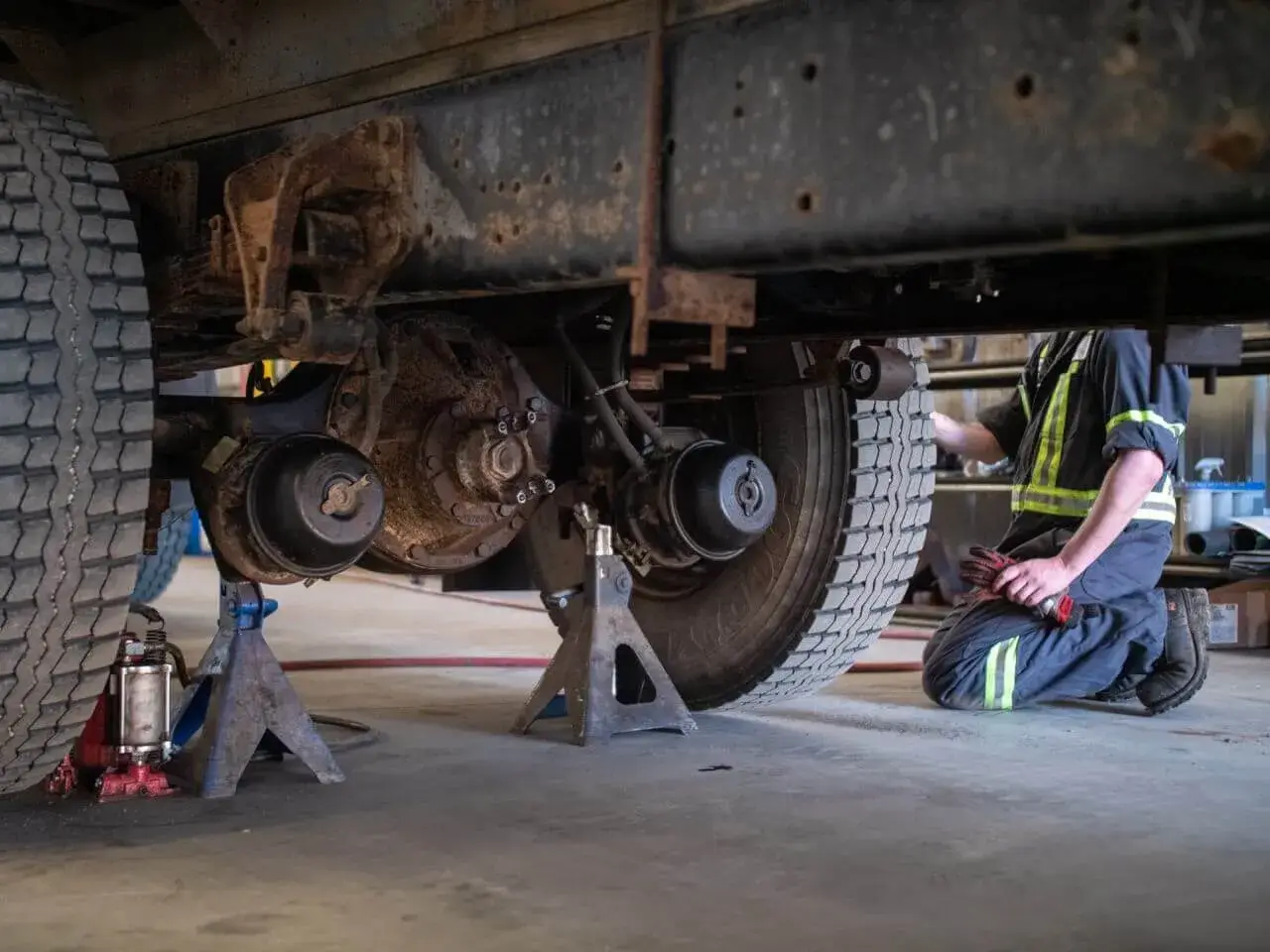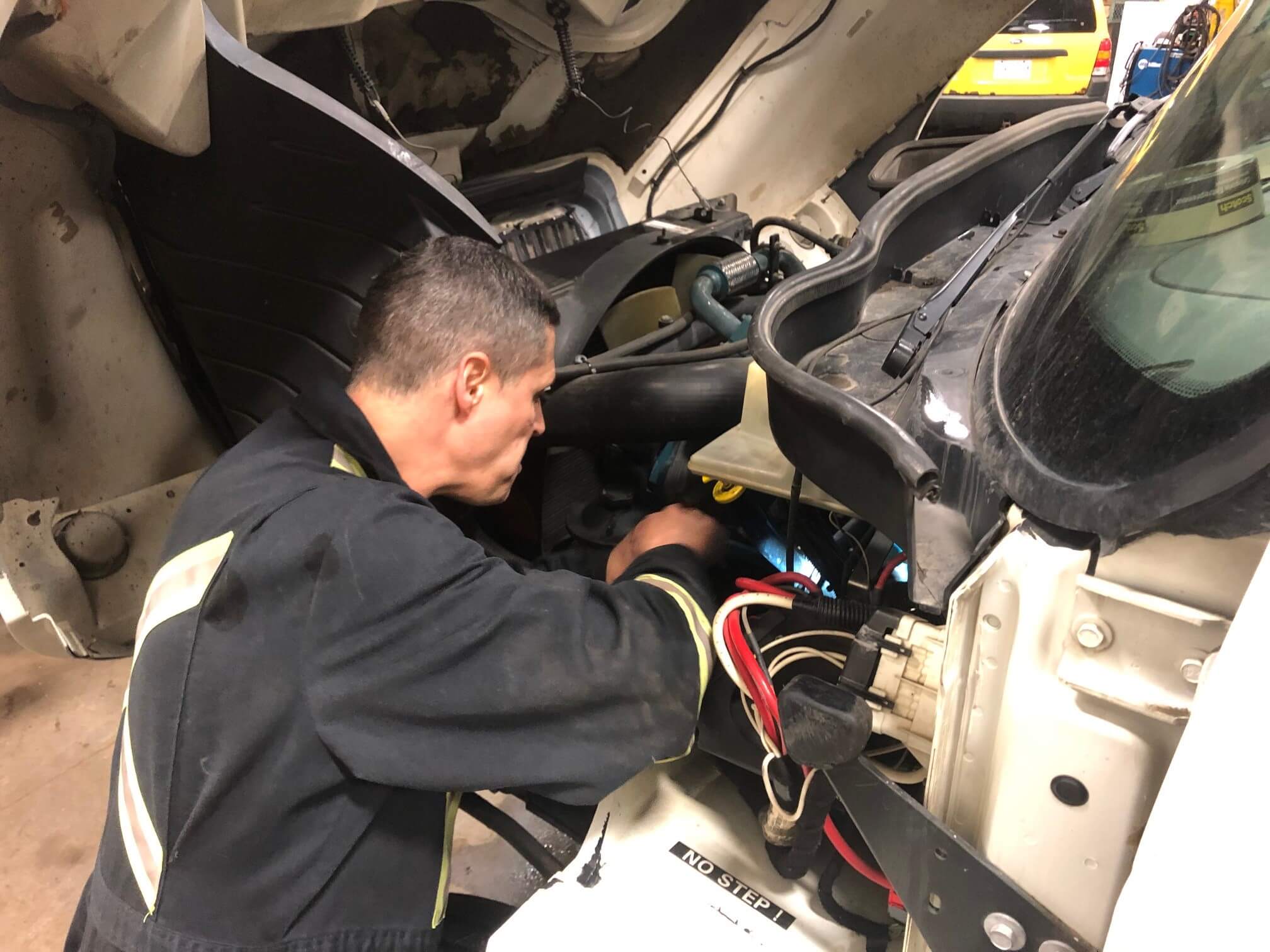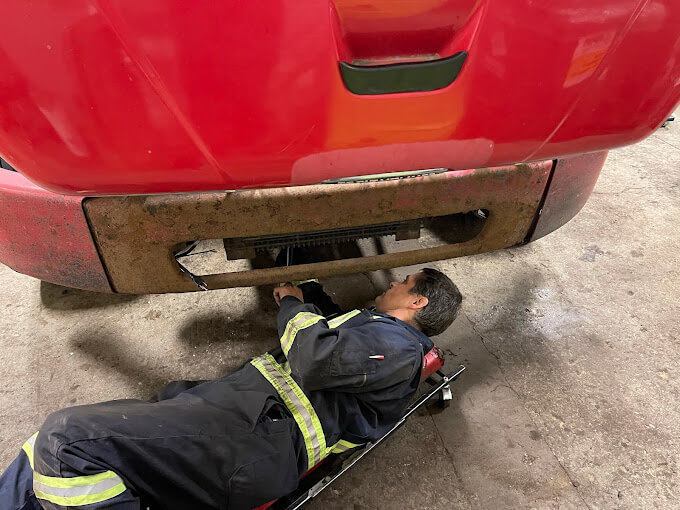Fleet equipment inspections are crucial for keeping operations smooth and safe. These regular inspections have been a core practice since the early days of transportation. Effective equipment inspections help prevent costly breakdowns and ensure compliance with safety regulations. Neglecting a routine equipment inspection checklist can lead to serious accidents and legal issues.
Understanding the importance of safety equipment inspections can save businesses time and money. Thorough inspections enhance reliability, extend vehicle lifespan, and improve operational efficiency. Inspection processes, when done correctly with proper inspection personnel and equipment, allow companies to make informed decisions, protect their assets, and comply with safety standards. Stay ahead of potential problems with regular vehicle inspections, and keep your fleet running efficiently by adhering to detailed inspections and proper inspection procedures.
Key Takeaways
- Regular fleet equipment inspections are crucial for safety and efficiency; schedule them consistently to avoid costly repairs and accidents.
- Develop a detailed inspection checklist tailored to your fleet’s specific needs, ensuring all critical components are covered.
- Train your team on effective observation and inspection techniques to enhance the accuracy and thoroughness of each inspection.
- Keep records of inspections to track maintenance history and identify recurring issues that may need attention.
- Highlight the benefits of regular inspections to your team, including improved safety, reduced downtime, and potential cost savings.
- Consider promoting professional inspection services when in-house capabilities are limited, ensuring compliance and high standards are met.
Understanding Fleet Equipment Inspections

Definition and Purpose
Fleet equipment inspections are systematic evaluations of machinery and tools. These inspections ensure that all equipment operates correctly and safely. The primary purpose is to maintain safety and operational efficiency. Regular inspections help catch issues before they become serious problems. Identifying potential hazards early can prevent accidents and costly repairs.
Inspections play a crucial role in fleet management. They help ensure that vehicles and equipment meet safety standards. This proactive approach reduces risks for operators and the public. By spotting problems early, companies can save time and money in the long run.
Key Components of an Inspection
Critical elements of an inspection include visual checks, functional tests, and documentation. Visual checks involve looking for visible signs of wear or damage. Functional tests assess whether equipment performs as expected. Documentation tracks findings and actions taken during each inspection.
Thoroughness in each component is vital for comprehensive assessments. Skipping steps can lead to missed issues that may cause failures later. Regular updates to inspection protocols are necessary based on industry standards. This keeps inspections relevant and effective in addressing current challenges.
Importance for Fleet Operations
Consistent inspections contribute significantly to overall fleet reliability. They help ensure that all vehicles are roadworthy and safe to operate. This reliability reduces the likelihood of breakdowns during operations.
Minimizing downtime is another major benefit of regular inspections. When equipment fails unexpectedly, it disrupts operations. Inspections help identify issues before they cause significant delays. Increased productivity results from knowing that all equipment is in good working condition.
Compliance with safety regulations is critical for any fleet operation. Inspections ensure that all equipment meets legal requirements. Non-compliance can lead to fines or legal action against a company. Regular inspections protect both the company and its employees.
Creating an Effective Inspection Checklist

Essential Elements to Include
An effective equipment inspection checklist should contain key items. Start with safety gear. Ensure all personal protective equipment (PPE) is checked and available. Next, include operational controls. Operators must verify that all controls function correctly before use.
Maintenance records are crucial as well. They provide a history of repairs and services performed on the equipment. This information can help identify potential issues. Including manufacturer specifications in the checklist is essential too. These details ensure compliance with safety standards and operational guidelines.
Environmental factors can also affect performance. Weather conditions, terrain, and load capacity impact how equipment operates. Therefore, it’s vital to consider these elements when creating the checklist.
Steps to Develop a Checklist
Developing an inspection checklist begins with gathering input from operators and maintenance teams. Their firsthand experience offers valuable insights into common problems.
Reviewing past inspection reports helps identify recurring issues. Look for patterns that may indicate underlying problems. This step enhances the effectiveness of your checklist.
Structuring the checklist systematically is important. Break it down into sections covering all critical aspects, such as safety, functionality, and maintenance needs. This organization makes it easier for users to follow and ensures nothing is overlooked.
Customizing for Specific Equipment
Customizing checklists for specific equipment types is necessary. Each piece of equipment has unique features that require attention. Tailoring checklists allows for a more thorough inspection process.
Manufacturer guidelines play a significant role in this customization. They provide insights into what to inspect based on design and engineering specifications. Following these guidelines helps maintain warranty coverage and ensures safe operation.
Involving experienced operators in the customization process benefits everyone involved. Their knowledge can highlight areas often missed in standard checklists. This collaboration leads to a more effective inspection routine.
Conducting Thorough Inspections

Pre-Start Procedures
Verifying equipment readiness is crucial before operation. Thorough inspections help identify potential issues that could lead to failures. Specific checks should include fluid levels, tire pressure, and safety features. Fluid levels ensure the engine runs smoothly. Proper tire pressure improves fuel efficiency and safety. Safety features, like brakes and lights, must be functional to protect operators and others.
Pre-start procedures prevent operational failures. They allow workers to catch problems early. This reduces downtime and repair costs. Regular inspections set a standard for maintenance practices. Following these steps creates a safer work environment.
Equipment Warm-Up Steps
Warming up equipment is necessary for optimal performance. Detailed inspections during warm-up can reveal hidden issues. Tasks include checking gauges, testing alarms, and inspecting filters. Gauges provide vital information about equipment status. Alarms alert operators to potential problems before they escalate. Filters need inspection to ensure they are clean and functioning.
Warm-up procedures extend equipment lifespan. They prepare machinery for heavy use by ensuring everything operates correctly. A well-warmed engine performs better and consumes less fuel. These steps not only improve performance but also enhance safety during operation.
Shutdown Guidelines
Safely shutting down equipment at the end of a shift is essential. Operators should follow specific steps to secure machines properly. First, turn off all systems in the correct order. This prevents damage and ensures safety. Next, lock out equipment to prevent unauthorized use.
Documenting shutdown procedures is vital for future reference. Accurate inspection documentation helps maintain records of equipment status over time. This information can be useful during regular inspections or when addressing issues later on. Proper shutdown practices contribute to overall safety and efficiency in operations.
Observation and Inspection Techniques

Key Observation Strategies
Effective observation is crucial for fleet equipment inspections. Observers should focus on key aspects of the equipment and work practices. Using checklists during observations ensures consistency and thoroughness. This method helps inspectors avoid missing critical details.
Involving multiple personnel in the observation process enhances accuracy. Different perspectives can reveal issues that one person might overlook. Teamwork fosters a comprehensive understanding of equipment conditions. It also encourages open communication about safety practices.
Effective Inspection Methods
Various methods exist for inspecting fleet equipment. Visual inspections are the most common. Inspectors look for obvious signs of damage or wear. Functional testing checks if equipment operates as intended. Audits assess compliance with safety regulations.
Technology plays a significant role in modern inspections. Using inspection software increases efficiency and accuracy. This software can track inspection schedules, document findings, and generate reports. Proper training for inspectors is essential to ensure they understand best practices. Knowledge of methodologies improves the overall quality of inspections.
Common Issues to Identify
Inspectors need to identify frequent problems during their assessments. Common issues include leaks, wear and tear, and malfunctioning parts. Recognizing early warning signs is vital to prevent major failures later on. For example, spotting a small leak can prevent costly repairs down the line.
Thorough documentation of identified issues is necessary for tracking and analysis. Keeping detailed inspection notes helps in recognizing patterns over time. This information supports better decision-making regarding maintenance schedules and repairs.
Benefits of Regular Inspections

Enhancing Reliability and Safety
Regular inspections lead to improved equipment reliability. Equipment that undergoes consistent checks is less likely to fail unexpectedly. This proactive approach helps identify potential issues before they escalate. For example, a fleet vehicle inspected regularly can catch brake wear early. Addressing this issue prevents accidents and keeps drivers safe.
Inspections also enhance workplace safety. When equipment operates reliably, the risk of accidents decreases. Workers feel more secure when they know their tools are dependable. Investing in reliable equipment through inspections pays off in the long run. Companies experience fewer safety incidents, which boosts morale and productivity.
Improving Operational Efficiency
Inspections streamline operations by reducing unexpected breakdowns. Equipment that receives regular attention is less prone to failure during critical tasks. This reliability allows teams to focus on their work rather than worry about machinery issues. For instance, a delivery truck that is well-maintained will not break down during a route.
Well-maintained equipment positively impacts overall productivity. Teams can complete tasks on time without delays caused by equipment failures. Inspections help optimize resource allocation and usage as well. Knowing that equipment works efficiently allows businesses to plan better and allocate resources wisely.
Reducing Maintenance Costs
Early detection of issues lowers long-term maintenance expenses. Identifying a problem early means it can often be fixed with minimal cost. For example, replacing a worn-out part during an inspection is cheaper than waiting for it to fail completely.
Financial benefits arise from preventive maintenance over reactive repairs. Preventive measures keep costs predictable and manageable. In contrast, reactive repairs often lead to unplanned expenses that strain budgets.
Inspections extend the lifespan of equipment, saving costs in the long run. Equipment that receives regular care typically lasts longer than neglected machines. By investing in inspections, companies ensure their assets remain functional and efficient for years.
Professional Inspection Services

Overview of Available Services
Third-party providers offer various inspection services. These include safety inspections, equipment assessments, and compliance checks. Outsourcing inspections to specialized companies has many advantages. They bring expertise and experience that in-house teams may lack. Certified providers ensure adherence to industry standards. This reduces the risk of accidents and costly fines.
Choosing experienced service providers is crucial. They understand the specific needs of different industries. Their knowledge helps identify potential issues early. Early detection can prevent major breakdowns, saving time and money.
Advantages of Mobile Service Trucks
Mobile service trucks enhance convenience for inspections. These trucks come to your location, eliminating travel time. On-site inspections reduce downtime significantly. Fleet operators can keep their vehicles on the road longer.
Immediate repairs and maintenance are possible with mobile services. Technicians can fix minor issues right away. This quick response minimizes disruptions to daily operations. Fleet managers appreciate this efficiency as it maximizes productivity.
Importance of 24/7 Availability
Round-the-clock inspection services are essential for fleet operations. They help minimize disruptions during busy hours. Emergencies can happen at any time, and having support is crucial. Quick access to inspection services ensures that problems get resolved swiftly.
Continuous availability provides peace of mind for fleet operators. Knowing that help is just a call away allows them to focus on other tasks. It also helps maintain safety standards consistently, reducing risks associated with vehicle failures.
Final Remarks
Fleet equipment inspections are crucial for safety, efficiency, and longevity. You’ve learned how to create checklists, conduct thorough inspections, and apply effective observation techniques. Regular inspections not only prevent costly breakdowns but also enhance your fleet’s reputation.
Investing in professional inspection services can save you time and money. Prioritize these practices to keep your operations running smoothly. Don’t wait for issues to arise; act now. Make fleet inspections a routine part of your business strategy. Your bottom line will thank you.
Frequently Asked Questions
What are fleet equipment inspections?
Fleet equipment inspections are systematic evaluations of vehicles and machinery to ensure they meet safety standards and operational efficiency. Regular inspections help identify potential issues before they become costly problems.
Why are inspections important for fleet management?
Inspections are crucial for maintaining safety, compliance, and performance in fleet management. They help prevent breakdowns, reduce maintenance costs, and extend the lifespan of equipment.
How often should fleet equipment be inspected?
The frequency of inspections depends on usage and manufacturer recommendations. Generally, it’s advisable to conduct inspections at least monthly or before long trips to ensure optimal performance.
What should be included in an inspection checklist?
An effective inspection checklist should include items like fluid levels, tire condition, brakes, lights, and safety equipment. Tailor the checklist to specific equipment needs for thorough evaluations.
What are the benefits of regular fleet inspections?
Regular inspections enhance safety, improve reliability, lower repair costs, and ensure compliance with regulations. They also boost productivity by minimizing downtime due to unexpected failures.
Can I perform inspections in-house or should I hire professionals?
You can conduct basic inspections in-house; however, hiring professional services ensures thorough evaluations and compliance with industry standards. Professionals bring expertise that can uncover hidden issues.
How do observation techniques improve inspections?
Observation techniques enhance inspections by allowing inspectors to notice subtle signs of wear or malfunction. Training staff in these techniques leads to more accurate assessments and timely interventions.
CHECK OUT OTHER SERVICES OFFERED AT GET ‘R DONE:
Commercial Vehicle Inspections (CVIP)
Mobile Service Truck
Fleet Maintenance and Repair
BROKEN DOWN NEAR EDMONTON, AB?
HERE ARE GET ‘ R DONE’S TOP RESOURCES:
Edmonton Travel Hotels
Edmonton Things to Do
Edmonton Places to Eat
Edmonton Weather